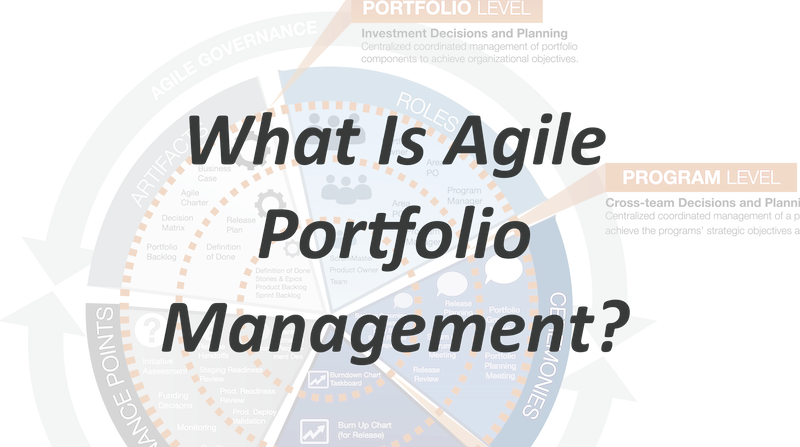Why Is Agile Portfolio Management Important For Companies?

When you are running a business, you always have too much on your plate. From taking care of the reconciliation to ensuring that the marketing campaigns reach the right people, everything in your firm needs to be precise and to the point; otherwise, you will never get tangible results. Well, one such aspect of a business that you should always focus on is portfolio management.
Portfolio management is the science or art of choosing and keeping track of a group of investments that helps meet the firm’s long-term financial objectives and the risk tolerance of the client. The actual problem with traditional portfolio management is that they focus on top-down planning, in which work is laid out over a more extended period. But in the case of agile portfolio management, the concept of build measure learn cycle is used for solo agile teams, and only then is it applied on a larger scale.
This simple definition of agile portfolio management might not be enough to make you succumb to choosing it for your company. This is why we have come up with this blog post in which we will discuss why agile is vital for your firm’s portfolio management.
Why agile portfolio management?
Applying The agile approach for portfolio management, you get transparent reporting and visibility into every agile project of the company. And with such an approach, you can improve ROI, outcomes and streamline your team’s performance.
Using agile portfolio management with a software solution allows you to automatically roll up data into intuitive dashboards, which helps align the agile strategies with the overall goal of your organization.
Taking care of an agile team can indeed prove challenging as without a formal process, its’ quite difficult to gather information from the disparate system. But when you integrate agile tools into different portfolio management solutions, you get all the valuable information in one place. This helps the user continue using the system they are familiar with. So with the agile approach for portfolio management, keeping everybody on track while making the team members work towards the common goal becomes easy.
Strategic alignment
When you use the agile method, you make sure the agile team focuses on the right project, not on the next project. This is done by putting the highest value work on the top of the priority list, and these tasks are staffed by utilizing scoring for value-driven decision making.
When you work on portfolio management with an agile approach, you get familiar with using the right metrics for keeping tabs on portfolio management. You can also set up a portfolio for measuring the goals. This allows your firm to capitalize on the benefits of portfolio management.
And when you keep the project aligned with strategic objectives, you know the metrics you are using for keeping tabs on portfolio performance. In addition to this, you can easily measure performance against goals and stick to the decided timeline. So, we can say that when a firm starts prioritizing a portfolio based on its alignment with the strategic goal, you can achieve the set goals more seamlessly.
Visibility for improved portfolio executing and planning
By using the agile approach for portfolio management, a firm gains portfolio-level visibility for how the project is moving forward, the overall scope of the project, and the level of expectation in terms of the project’s outcomes.
With an ideal portfolio management solution, you can keep tabs on the project’s progress in real-time and even keep the stakeholders updated about the project. Along with this, you get a clear understanding of the main objective you are working for.
Roadmapping and financials
Start building roadmaps for executing projects precisely with the help of agile portfolio management. Get better visibility across the entire portfolio and keep track of the team working on the project. This is what roadmapping is all about. While on the other side, financials means simplifying the actual cost of the agile project. Gather data from your agile system to build a report on the team’s expected and real-time, as this helps keep both the project and the budget on track.
The agile approach allows firms to get rid of the limitations of traditional business approaches, and the same can be said for portfolio management. With the concept of building a measure learn cycle for solo teams, you can be sure to match the project’s expected outcomes with the actual one.



